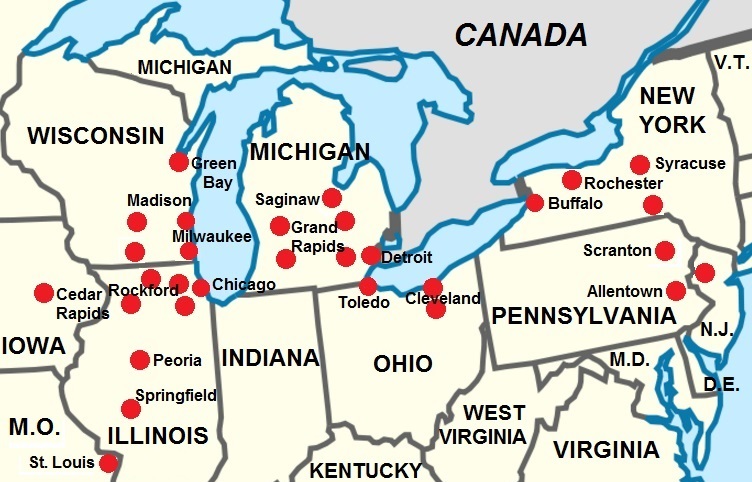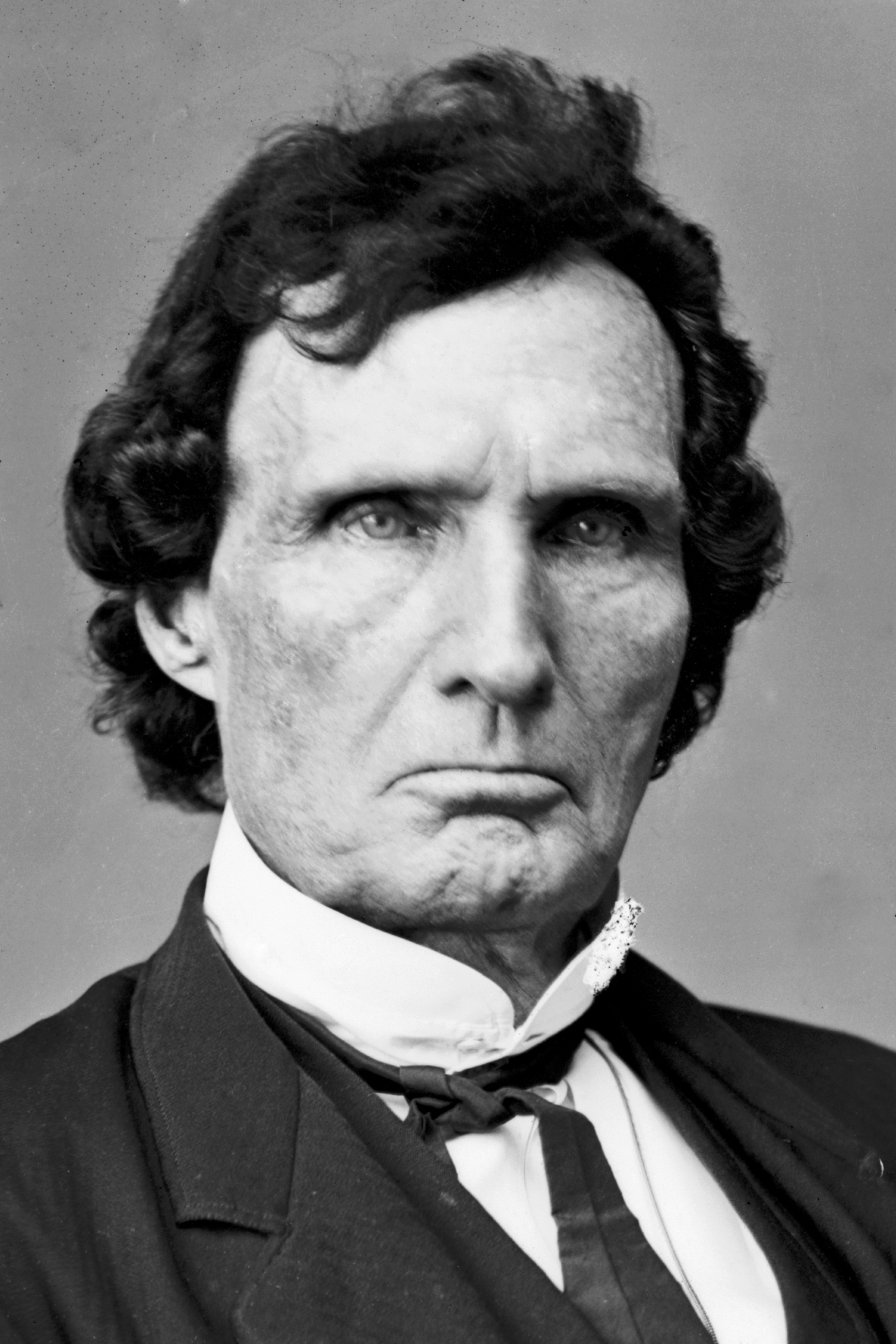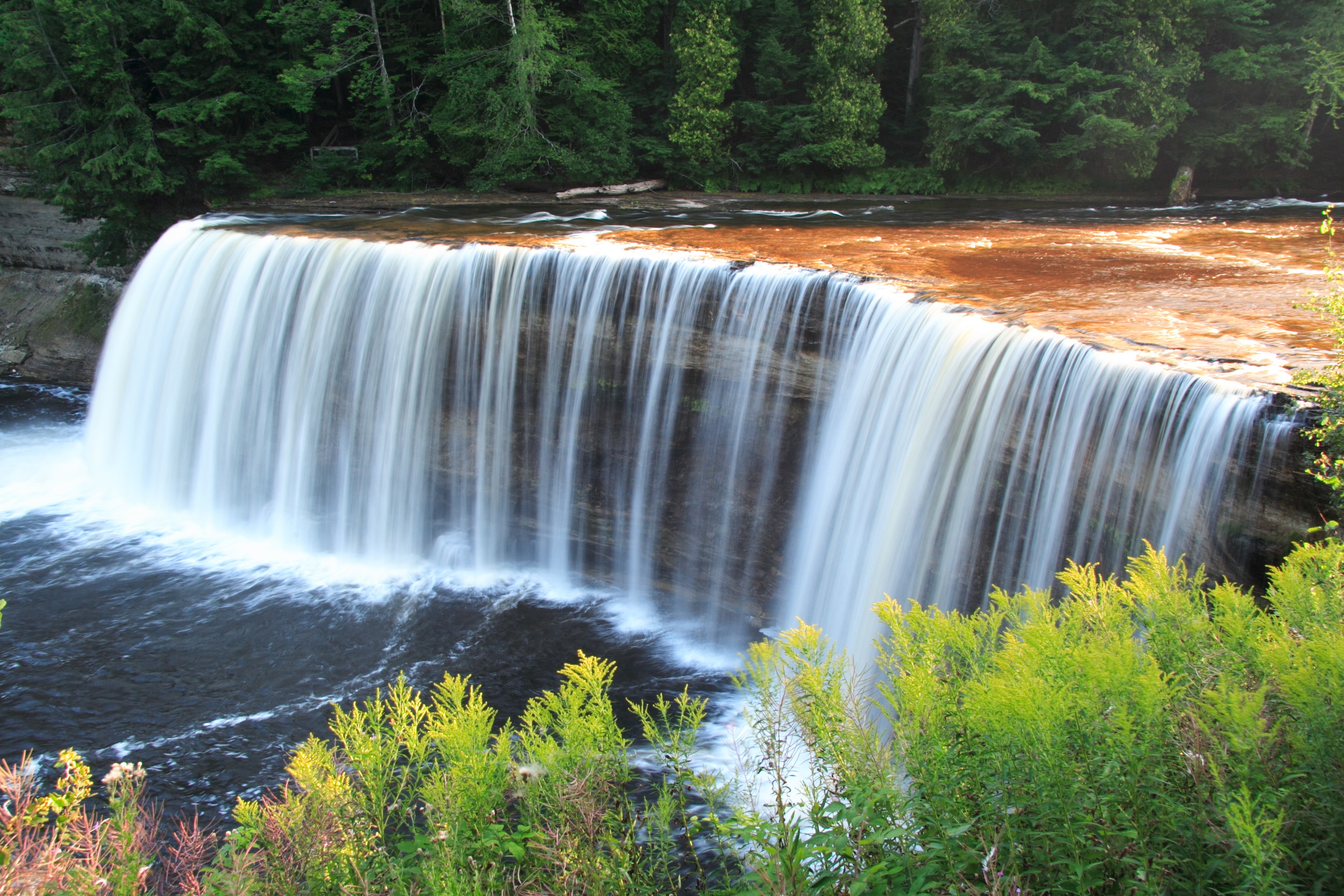|
Upper Midwest
The Upper Midwest is a northern subregion of the U.S. Census Bureau's Midwestern United States. Although the exact boundaries are not uniformly agreed upon, the region is usually defined to include the states of Iowa, Michigan, Minnesota and Wisconsin; some definitions include North Dakota, South Dakota, and parts of Nebraska and Illinois. Definitions The National Centers for Environmental Information considers the Upper Midwest climate region to include Iowa, Michigan, Minnesota, and Wisconsin. The United States Geological Survey uses two different Upper Midwest regions: *The USGS Upper Midwest Environmental Sciences Center considers it to be the six states of Illinois, Indiana, Iowa, Michigan, Minnesota and Wisconsin, which comprise the watersheds of the Upper Mississippi River and upper Great Lakes. *The USGS Mineral Resources Program considers the area to contain Illinois, Indiana, Michigan, Minnesota and Wisconsin. The Association for Institutional Research in the Uppe ... [...More Info...] [...Related Items...] OR: [Wikipedia] [Google] [Baidu] |
United States Census Bureau
The United States Census Bureau, officially the Bureau of the Census, is a principal agency of the Federal statistical system, U.S. federal statistical system, responsible for producing data about the American people and American economy, economy. The U.S. Census Bureau is part of the United States Department of Commerce, U.S. Department of Commerce and its Director of the United States Census Bureau, director is appointed by the president of the United States. Currently, Ron S. Jarmin is the acting director of the U.S. Census Bureau. The Census Bureau's primary mission is conducting the United States census, U.S. census every ten years, which allocates the seats of the United States House of Representatives, U.S. House of Representatives to the U.S. state, states based on their population. The bureau's various censuses and surveys help allocate over $675 billion in federal funds every year and it assists states, local communities, and businesses in making informed decisions. T ... [...More Info...] [...Related Items...] OR: [Wikipedia] [Google] [Baidu] |
Inland Northern American English
Inland Northern (American) English, also known in American linguistics as the Inland North or Great Lakes dialect, is an American English dialect spoken primarily by White Americans throughout much of the U.S. Great Lakes region. The most distinctive Inland Northern accents are spoken in Chicago, Detroit, Cleveland, Milwaukee, Buffalo, Rochester, and Syracuse. The dialect can be heard as far east as upstate New York and as far west as eastern Iowa and even among certain demographics in the Twin Cities, Minnesota. Some of its features have also infiltrated a geographic corridor from Chicago southwest along historic Route 66 into St. Louis, Missouri; today, the corridor shows a mixture of both Inland North and Midland American accents. Linguists often characterize the northwestern Great Lakes region's dialect separately as North-Central American English. The early 20th-century accent of the Inland North was the basis for the term "General American", though the regional ... [...More Info...] [...Related Items...] OR: [Wikipedia] [Google] [Baidu] |
Robert M
The name Robert is an ancient Germanic given name, from Proto-Germanic "fame" and "bright" (''Hrōþiberhtaz''). Compare Old Dutch ''Robrecht'' and Old High German ''Hrodebert'' (a compound of '' Hruod'' () "fame, glory, honour, praise, renown, godlike" and ''berht'' "bright, light, shining"). It is the second most frequently used given name of ancient Germanic origin.Reaney & Wilson, 1997. ''Dictionary of English Surnames''. Oxford University Press. It is also in use as a surname. Another commonly used form of the name is Rupert. After becoming widely used in Continental Europe, the name entered England in its Old French form ''Robert'', where an Old English cognate form (''Hrēodbēorht'', ''Hrodberht'', ''Hrēodbēorð'', ''Hrœdbœrð'', ''Hrœdberð'', ''Hrōðberχtŕ'') had existed before the Norman Conquest. The feminine version is Roberta. The Italian, Portuguese, and Spanish form is Roberto. Robert is also a common name in many Germanic languages, including En ... [...More Info...] [...Related Items...] OR: [Wikipedia] [Google] [Baidu] |
Progressive Party (United States, 1912–1920)
The Progressive Party, popularly nicknamed the Bull Moose Party, was a Third party (U.S. politics), third party in the United States formed in 1912 by former president Theodore Roosevelt after he lost the 1912 Republican Party presidential primaries, presidential nomination of the Republican Party to his former protégé turned rival, incumbent president William Howard Taft. The new party was known for taking advanced positions on Progressivism in the United States, progressive reforms and attracting leading national reformers. The party was also ideologically deeply connected with America's radical-liberal tradition. After the party's defeat in the 1912 United States presidential election, it went into rapid decline in elections until 1918 United States elections, 1918, disappearing by 1920. The "Bull Moose" nickname originated when Roosevelt boasted that he felt "strong as a Moose, bull moose" after losing the Republican nomination in June 1912 at the Chicago convention. As a ... [...More Info...] [...Related Items...] OR: [Wikipedia] [Google] [Baidu] |
Theodore Roosevelt
Theodore Roosevelt Jr. (October 27, 1858 – January 6, 1919), also known as Teddy or T.R., was the 26th president of the United States, serving from 1901 to 1909. Roosevelt previously was involved in New York (state), New York politics, including serving as the state's List of governors of New York, 33rd governor for two years. He served as the 25th Vice President of the United States, vice president under President William McKinley for six months in 1901, assuming the presidency after Assassination of William McKinley, McKinley's assassination. As president, Roosevelt emerged as a leader of the History of the Republican Party (United States), Republican Party and became a driving force for United States antitrust law, anti-trust and Progressive Era policies. A sickly child with debilitating asthma, Roosevelt overcame health problems through The Strenuous Life, a strenuous lifestyle. He was homeschooled and began a lifelong naturalist avocation before attending Harvard Colleg ... [...More Info...] [...Related Items...] OR: [Wikipedia] [Google] [Baidu] |
Progressivism In The United States
Progressivism in the United States is a Left–right political spectrum, left-leaning political philosophy and reform movement. Into the 21st century, it advocates policies that are generally considered social democratic and part of the American Left. It has also expressed itself within Centre-right politics, center-right politics, such as New Nationalism (Theodore Roosevelt), New Nationalism and progressive conservatism. It reached its height early in the 20th century. American middle class, Middle/American working class, working class and reformist in nature, it arose as a response to the vast changes brought by modernization, such as the growth of large corporations, Pollution in the United States, pollution, and Corruption in the United States, corruption in American politics. Historian Alonzo Hamby describes American progressivism as a "political movement that addresses ideas, impulses, and issues stemming from modernization of American society. Emerging at the end of the nine ... [...More Info...] [...Related Items...] OR: [Wikipedia] [Google] [Baidu] |
Republican Party (United States)
The Republican Party, also known as the Grand Old Party (GOP), is a Right-wing politics, right-wing political parties in the United States, political party in the United States. One of the Two-party system, two major parties, it emerged as the main rival of the then-dominant Democratic Party (United States), Democratic Party in the 1850s, and the two parties have dominated American politics since then. The Republican Party was founded in 1854 by anti-slavery activists opposing the Kansas–Nebraska Act and the expansion of slavery in the United States, slavery into U.S. territories. It rapidly gained support in the Northern United States, North, drawing in former Whig Party (United States), Whigs and Free Soil Party, Free Soilers. Abraham Lincoln's 1860 United States presidential election, election in 1860 led to the secession of Southern states and the outbreak of the American Civil War. Under Lincoln and a Republican-controlled Congress, the party led efforts to preserve th ... [...More Info...] [...Related Items...] OR: [Wikipedia] [Google] [Baidu] |
Republican Schoolhouse, Second And Elm Streets, Ripon, Fond Du Lac County, WI HABS WIS,20-RIPO,1-1
Republican can refer to: Political ideology * An advocate of a republic, a type of government that is not a monarchy or dictatorship, and is usually associated with the rule of law. ** Republicanism, the ideology in support of republics or against monarchy; the opposite of monarchism *** Republicanism in Australia ***Republicanism in Barbados ***Republicanism in Canada *** Republicanism in Ireland *** Republicanism in Morocco ***Republicanism in the Netherlands ***Republicanism in New Zealand ***Republicanism in Spain *** Republicanism in Sweden ***Republicanism in the United Kingdom ***Republicanism in the United States **Classical republicanism, republicanism as formulated in the Renaissance *A member of a Republican Party: **Republican Party (other) **Republican Party (United States), one of the two main parties in the U.S. **Fianna Fáil, a conservative political party in Ireland **The Republicans (France), the main centre-right political party in France **The Republic ... [...More Info...] [...Related Items...] OR: [Wikipedia] [Google] [Baidu] |
The Dakotas
The Dakotas, also known as simply Dakota, is a collective term for the U.S. states of North Dakota and South Dakota. It has been used historically to describe the Dakota Territory, and is still used for the collective heritage, culture, geography, fauna, sociology, economy, and cuisine of the two states. Etymology The name "Dakota" refers to the Dakota people. History The territory now known as the Dakotas includes a large portion of the ancestral land of Native American tribes, in particular various tribes of Sioux such as the Dakota people, also known as the Santee Sioux. The United States government stakes its claim to the land through the Louisiana Purchase and Rupert's Land acquisition. The region historically involved a complex series of conflicts between the U.S. government and Native American tribes (and among themselves). The region was part of the Minnesota and Nebraska territories until 1861. Dakota Territory initially included parts of present day Montana ... [...More Info...] [...Related Items...] OR: [Wikipedia] [Google] [Baidu] |
Montana
Montana ( ) is a landlocked U.S. state, state in the Mountain states, Mountain West subregion of the Western United States. It is bordered by Idaho to the west, North Dakota to the east, South Dakota to the southeast, Wyoming to the south, and the Provinces and territories of Canada, Canadian provinces of Alberta, British Columbia, and Saskatchewan to the north. It is the List of U.S. states and territories by area, fourth-largest state by area, but the List of U.S. states and territories by population, eighth-least populous state and the List of U.S. states and territories by population density, third-least densely populated state. Its List of capitals in the United States, capital is Helena, Montana, Helena, while the List of municipalities in Montana, most populous city is Billings, Montana, Billings. The western half of the state contains numerous mountain ranges, while the eastern half is characterized by western prairie terrain and badlands, with smaller mountain ranges f ... [...More Info...] [...Related Items...] OR: [Wikipedia] [Google] [Baidu] |
Upper Peninsula Of Michigan
The Upper Peninsula of Michigan—also known as Upper Michigan or colloquially the U.P. or Yoop—is the northern and more elevated of the two major landmasses that make up the U.S. state of Michigan; it is separated from the Lower Peninsula of Michigan, Lower Peninsula by the Straits of Mackinac. It is bounded primarily by Lake Superior to the north, separated from the Canadian province of Ontario at the east end by the St. Marys River (Michigan–Ontario), St. Marys River, and flanked by Lake Huron and Lake Michigan along much of its south. Although the peninsula extends as a geographic feature into the state of Wisconsin, the state boundary follows the Montreal River (Wisconsin–Michigan), Montreal and Menominee River, Menominee rivers and a line connecting them. First inhabited by Algonquian languages, Algonquian-speaking native American tribes, the area was explored by French colonists, then occupied by British forces, before being ceded to the newly established United Sta ... [...More Info...] [...Related Items...] OR: [Wikipedia] [Google] [Baidu] |
North Central American English
North-Central American English is an American English dialect, or dialect in formation, native to the Upper Midwestern United States, an area that somewhat overlaps with speakers of the Inland Northern dialect situated more in the eastern Great Lakes region. In the United States, it is also known as the Upper Midwestern or North-Central dialect and stereotypically recognized as a Minnesota accent or sometimes Wisconsin accent (excluding Wisconsin's Milwaukee metropolitan area). It is considered to have developed in a residual dialect region from the neighboring Western, Inland Northern, and Canadian dialect regions. If a strict ''cot–caught'' merger is used to define the North-Central regional dialect, it covers the Upper Peninsula of Michigan, the northern border of Wisconsin, the whole northern half of Minnesota, some of northern South Dakota, and most of North Dakota; otherwise, the dialect may be considered to extend to all of Minnesota, North Dakota, most of South Dako ... [...More Info...] [...Related Items...] OR: [Wikipedia] [Google] [Baidu] |





